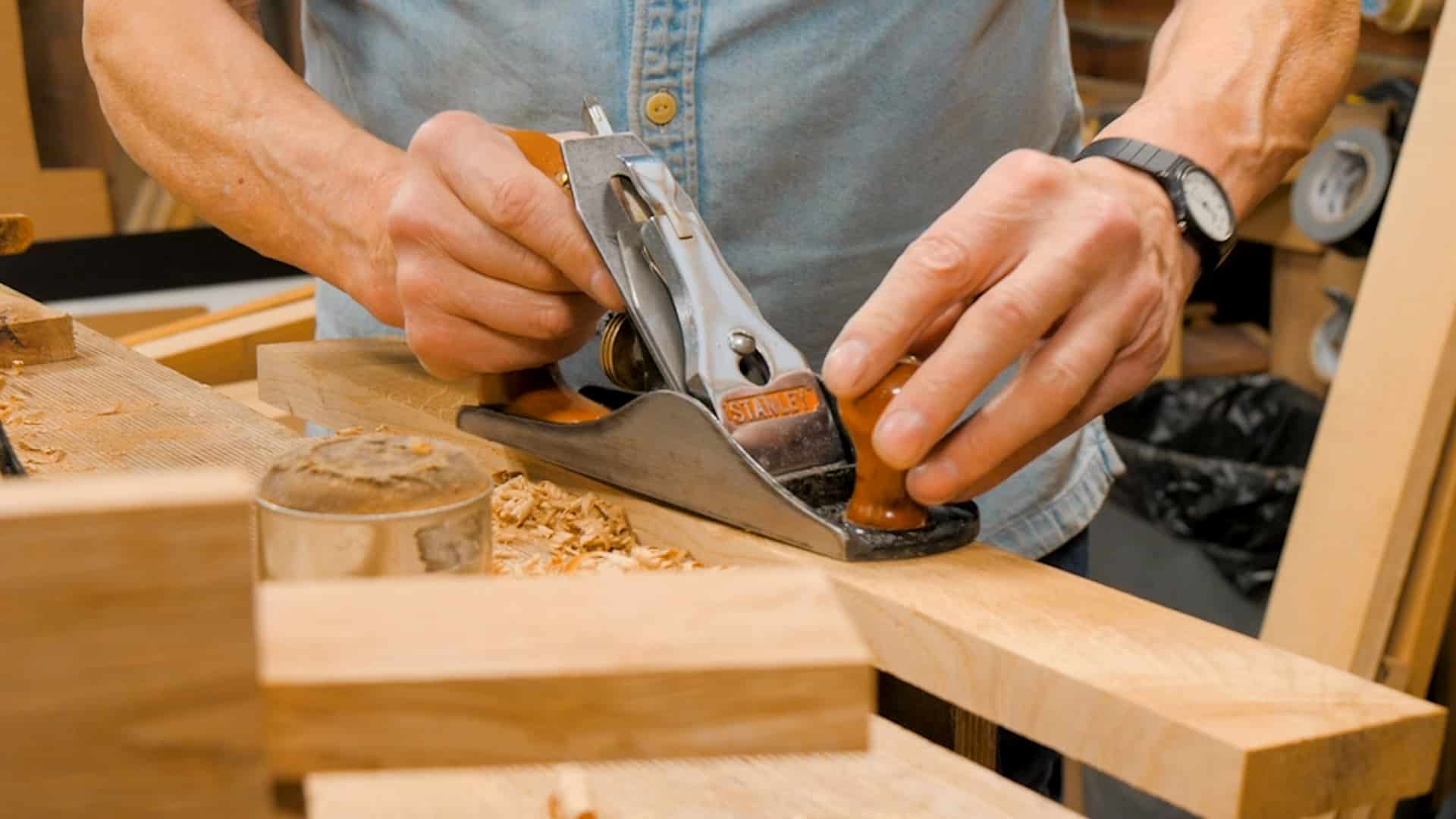Sellers Home Bedside Cabinet: Episode 1
Posted 8 March 2023
This is an episode in a paid series. Want to watch it? You just need to sign up as a paid member, and you can enjoy this video and many other videos we think you will love.
Paul enjoys taking everyone from the garage to the rooms in Sellers’ Home, including you in the thought processes he goes through in considering any project–concerning its intended purpose and the location it’s destined for. Additionally, it helps him plan for the cutting list, wood choices, and the work he has to do in stock preparations, all of which get tied together in the drawings. From this point on, it is a question of milling the wood, thinking about how best to achieve it with hand tools and the bandsaw, but most importantly, how to do it efficiently. Taking rough-sawn wood from the sawmill to finished sizes is in high demand, but it is also the best way to practise the processes. We have about 100 pieces in the two bedside cabinets, so strategising is important. In this video, Paul takes you step by step through truing all of the carcass stock ready for layout, grooving, etc.


Paul,
I could not help smiling when saw you sketching the room and arrangement of furniture with pencil, rule, and paper.
I was trained in drafting ( a bit) when I was young, but during my professional career I became an avid computer user. I have used Sketchup and Fusion 360 as matter of course, yet when I design a project for carpentry or woodworking, I always make a scale drawing by hand. I just can’t visualize things as quickly and efficiently without a pencil, rule, and grid paper to lay out my thinking. The computer designing programs just get in my way.
Thanks for filming another great project.
Great to hear that the new video series put a smile on your face. I have said it a lot recently but this one could be my favourite piece!
I do enjoy the videos of stock preparation. I always pick up something I’d lost sight of or never knew. Thanks.
I find there’s a huge advantage in planning the slow old fashioned way – you get to live and breathe the concepts rather than just see pictures rapidly generated. Carefully thinking and placing each piece allows you to reflect on how the pieces interact with each other, with the space and with you, and identify issues that may not be evident in the rush to produce a plethora of scenarios.
Does Paul arrange his wood in a particular way to try to keep it from moving after he dimensions it?
Not only do I come here to enjoy Paul’s work and learn skills to use in my own life. But, today I also learned of an awesome Christmas gift for my daughter who loves work with me in the garage building and creating. The cardboard construction kit is definitely on Santa’s list!
Good idea! The cardboard construction kit is great.
Hi,
I am really eager to start on this project soon but it would be really helpful if I can see some basic cutlist and dimesions that Paul used. Even simple pictures of the plan he used in his notebook would be great too. Or is there a place the plans are already available which I am not aware of. Thank you in advance and I love watching and following Paul’s videos and I know I am just one among many! 🙂
Thanks,
Lax
Finally I finished this project! This is my first big fine furniture project and came out really good considering I am such a newbie…I chopped my first mortise and tenon completely by hand…some mistakes were made but every subsequent joinery was better and faster than previous…
It took me some time to watch the videos multiple times and understand the dimensions and modify as per my needs..I was nervous but it came out super good!
Thank you so much Paul for these wonderful lessons and making me believe even I could achieve such tasks with hand tools.
Just one minor issue I am having – my drawer seems to get sticky every now and then but as soon as I pull it once it is smooth. Is this because I used shellac on lower side of drawer as well as the rails? I hope ut goes away after a month or so because I want to keep this traditional and not go for metal drawer slides. Thank you!